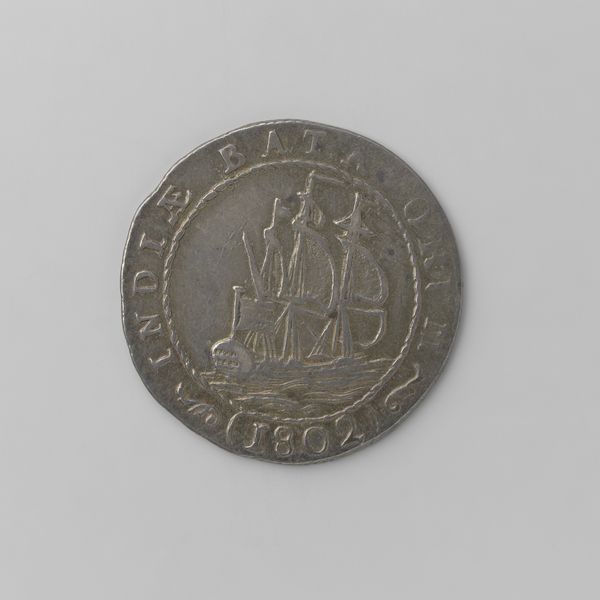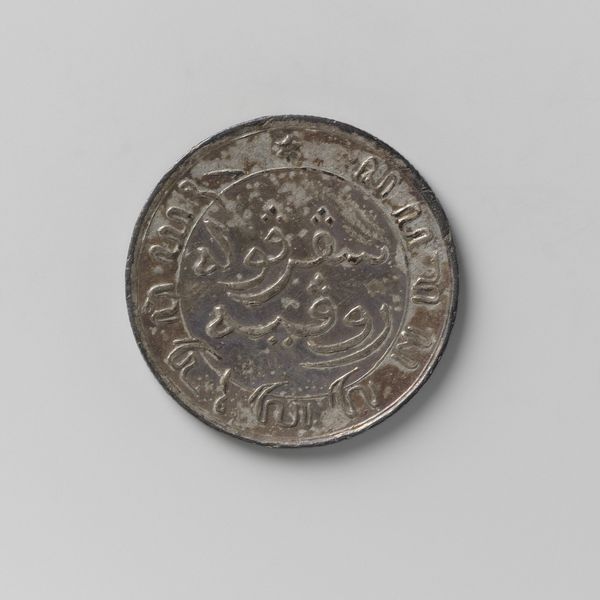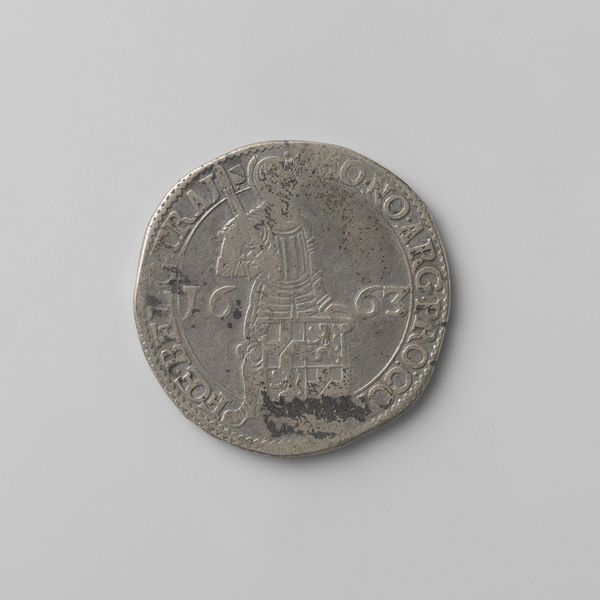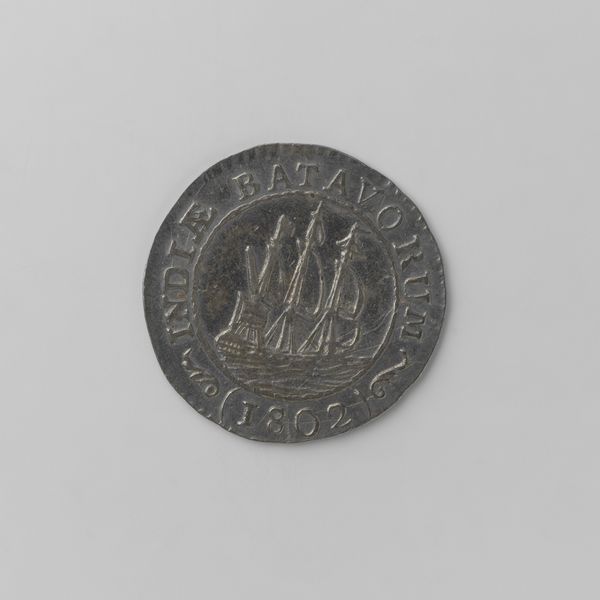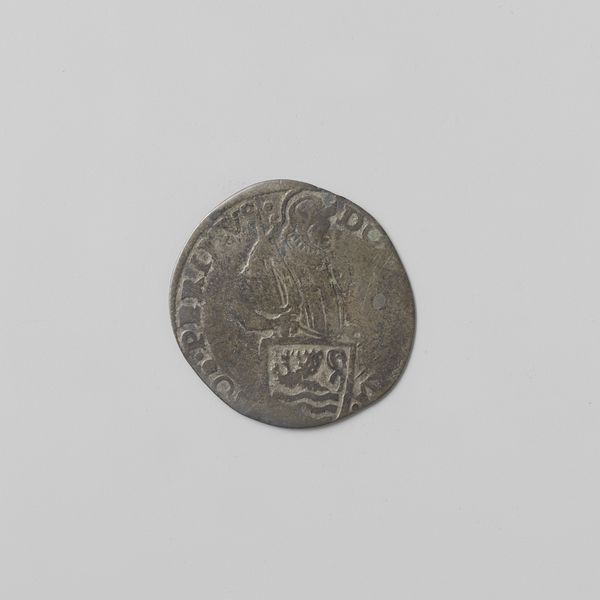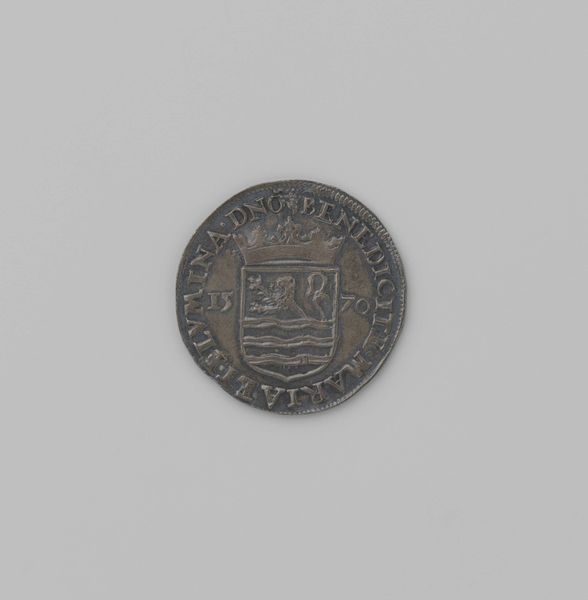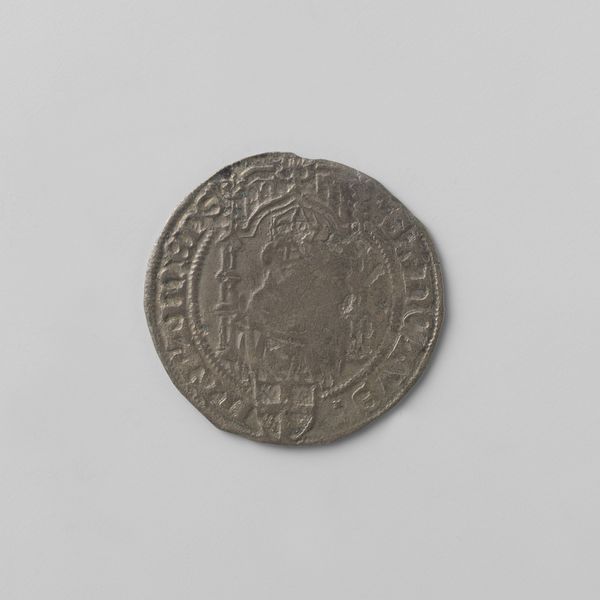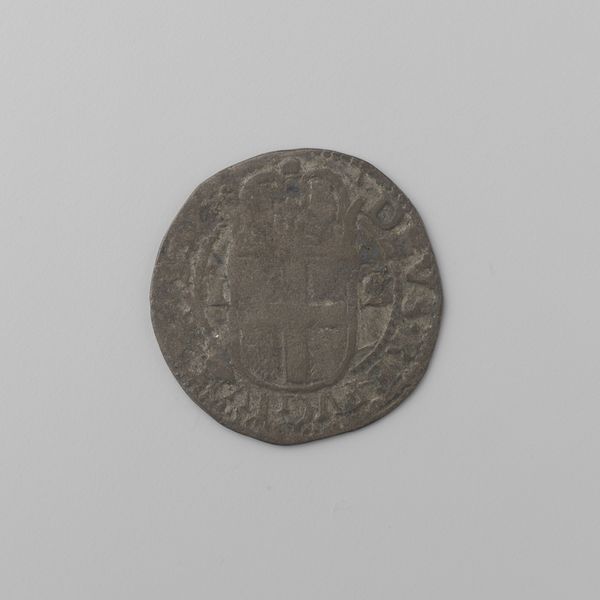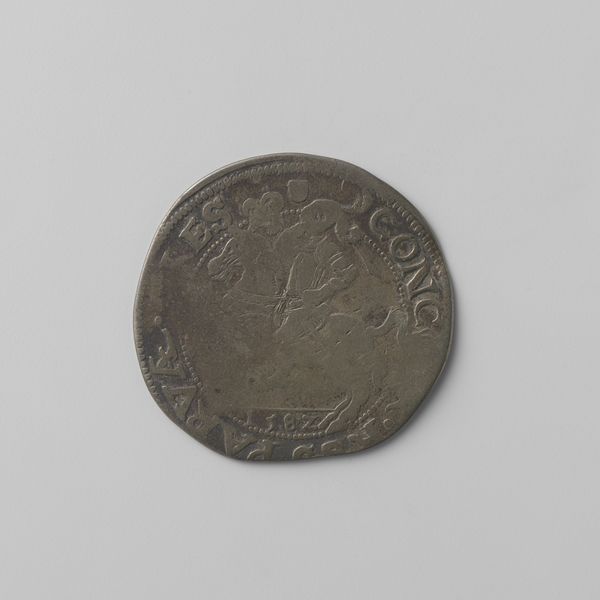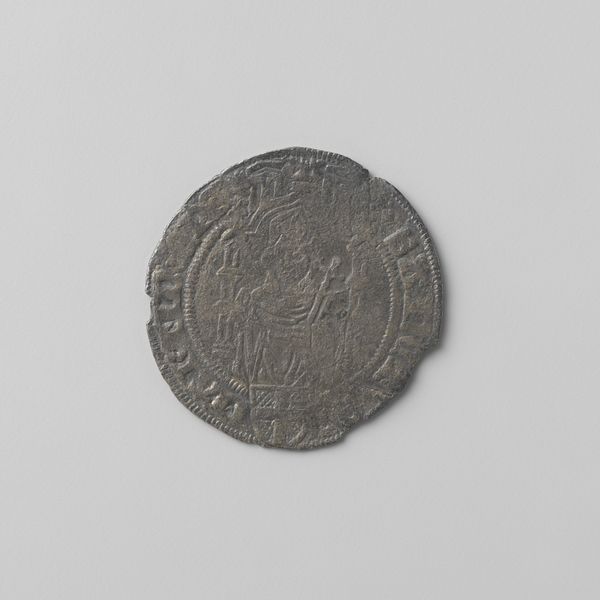
print, metal, engraving
#
narrative-art
# print
#
metal
#
geometric
#
ancient-mediterranean
#
embossed
#
engraving
Dimensions: diameter 2.0 cm, weight 1.36 gr
Copyright: Rijks Museum: Open Domain
Editor: Here we have a coin, “1/8 gulden voor Nederlands Indie, 1802,” or "1/8 Guilder for the Dutch East Indies, 1802". It's a small metal object with an engraving of a ship. It feels... well, a bit insignificant at first glance, but I imagine it holds a larger story. How do you interpret this seemingly simple piece? Curator: The size is deceptive. This coin isn’t just currency; it's a potent symbol of colonialism, power, and exploitation. "Nederlands Indie," or the Dutch East Indies, now Indonesia, was a key site of Dutch colonial activity. This coin represents the flow of wealth extracted from the land and labor of the Indonesian people, enriching the Dutch Republic. Editor: So the ship depicted represents more than just trade? Curator: Precisely. It’s a vessel of oppression. Think about the raw materials – spices, rubber, coffee – forced from the colony to the metropole. This image, seemingly benign, embodies a system built on unequal power dynamics. What narratives are absent from the coin's imagery? Who is missing from this picture? Editor: The local populations who were impacted by the colonialism are invisible here. It's designed only to reinforce Dutch authority. Curator: Exactly. By understanding the context, the coin transforms from a mere object into a tool that illustrates a painful legacy. It prompts us to question whose stories are told, whose are erased, and how power manifests even in the smallest of objects. Editor: I hadn't considered how a coin could carry so much weight, historically. I will view historical objects from now on by analyzing their embedded power structures. Curator: Indeed, questioning the narratives that objects silently perpetuate brings historical consciousness to the forefront of our examination.
Comments
No comments
Be the first to comment and join the conversation on the ultimate creative platform.
